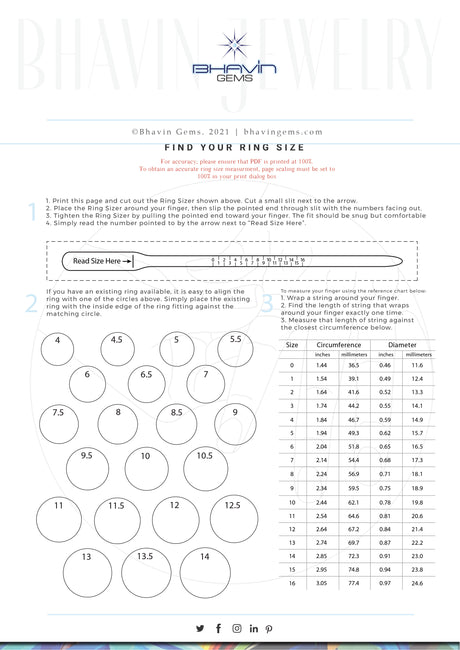Clarity
Because they are formed deep within the earth, under extreme heat and pressure; virtually all diamonds contain "birthmarks"; small imperfections inside the diamond (called inclusions), or on its surface (called blemishes). Clarity refers to the degree to which these imperfections are present. Diamonds which contain numerous or significant inclusions or blemishes have less brilliance because the flaws interfere with the path of light through the diamond.
The position of an inclusion affects how easily it can be seen. Diamond cutters make every effort to cut a stone so that inclusions are not visible through the table of the finished diamond. The preferred position for inclusions is under the bezel facets or near the girdle because they are harder to see there.
Almost all diamonds are graded for clarity using the 11 point diamond clarity scale created by the GIA, including diamonds which were not actually graded by GIA (every Bhavin Diamond is GIA certified). In grading diamond clarity, the GIA considers the number, size, color, reflectivity, and position of every flaw visible under 10x magnification.
GIA DIAMOND CLARITY SCALE

DIAMOND PLOT
Because a photograph cannot capture the subtleties of clarity, GIA uses a diamond plot to map a diamond's interior and exterior flaws. A diamond plot is a graphic representation of every flaw that affects the overall clarity grade. The flaws are found under 10x magnification by a skilled grader.
While the plot shows the type and position of each flaw, the actual visibility of the flaw is communicated in the diamond Clarity Grade itself (i.e. two diamonds may have very similar plots, but very different Clarity grades, reflecting the actual severity and visibility of the recorded flaws).

Example GIA Diamond Plot: The Key To Symbols section
shows the flaws in order of severity
Besides the plot, there is also a comment section on the certificate where additional clarity characteristics are often noted. These are usually too minor to be reflected in the plot itself. Between the plot and the comment section, all inclusions visible under 10x magnification are accounted for.
A note of caution:
A diamond plot does not reproduce the actual appearance of a diamond. For SI1 or lower grades, do not assume that a relatively clean plot indicates that there are no flaws visible to the naked eye. Often, a plot may carry only one or two markings, but these are so severe that they warrant a lower overall clarity grade.
By the same token, a cluttered plot may not mean the diamond is visually flawed. The diamond may in fact be flawless to the naked eye, since no single inclusion is severe enough to be seen (even though the cumulative effect of the flaws might warrant a lower clarity grade). When in doubt, speak to a diamond consultant, who will gladly review a diamond on your behalf.
Common inclusions and blemishes, as they are represented on the GIA diamond plot, are illustrated below. GIA uses the color green for surface blemishes, and red for internal inclusions. Sometimes the nature of the inclusion (if it reaches the surface, for example) calls for the use of both green and red. The color black is used to convey extra facets.





